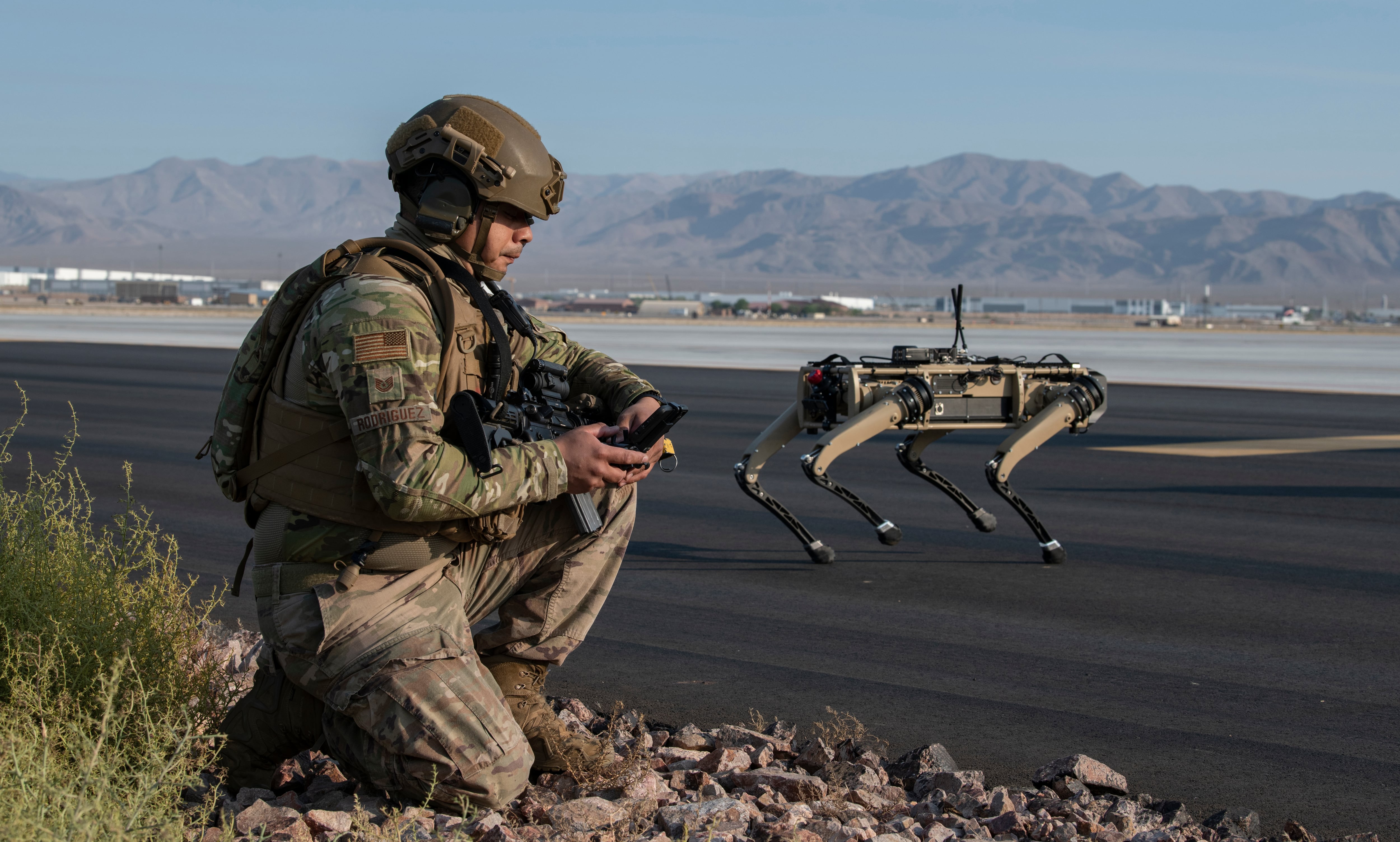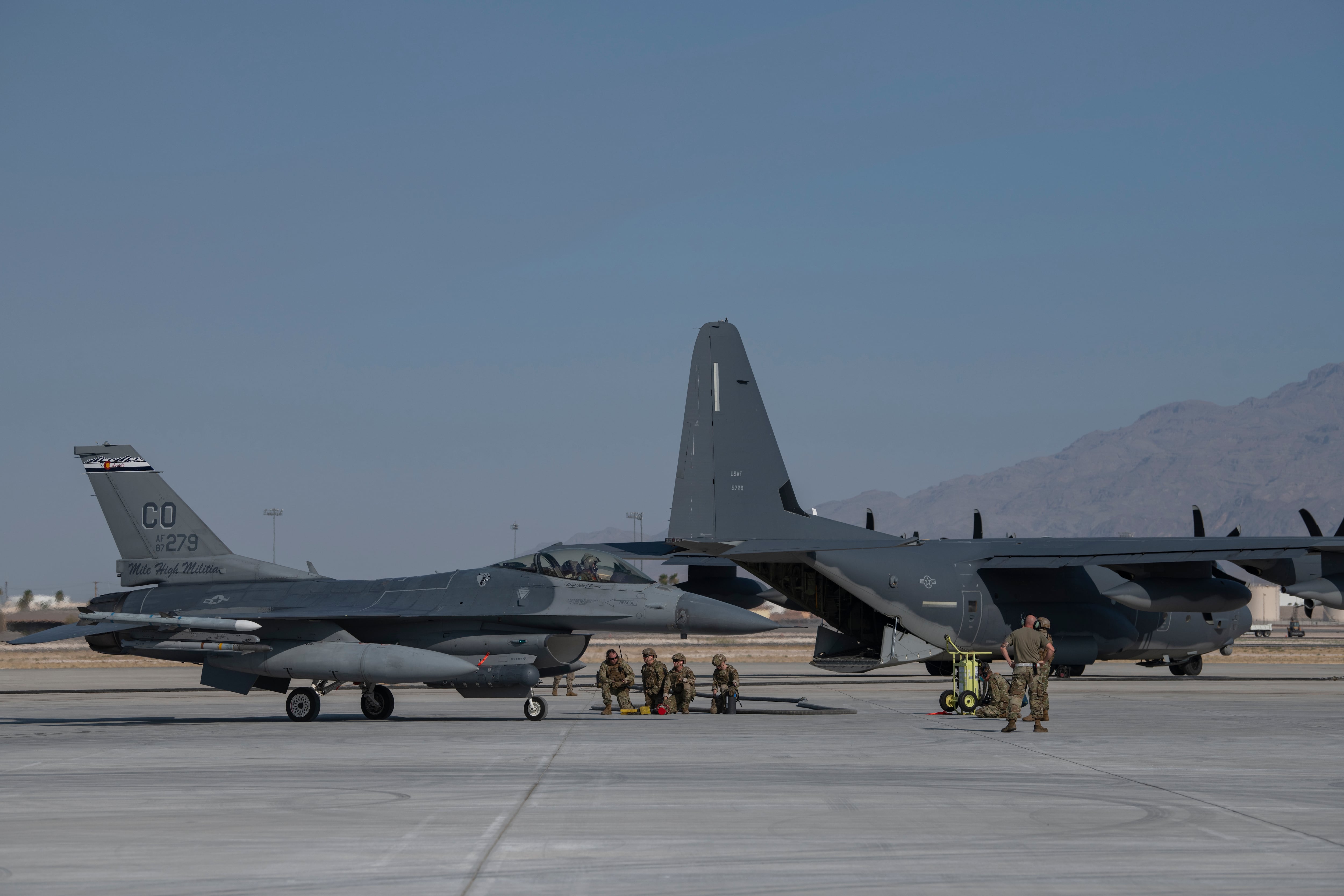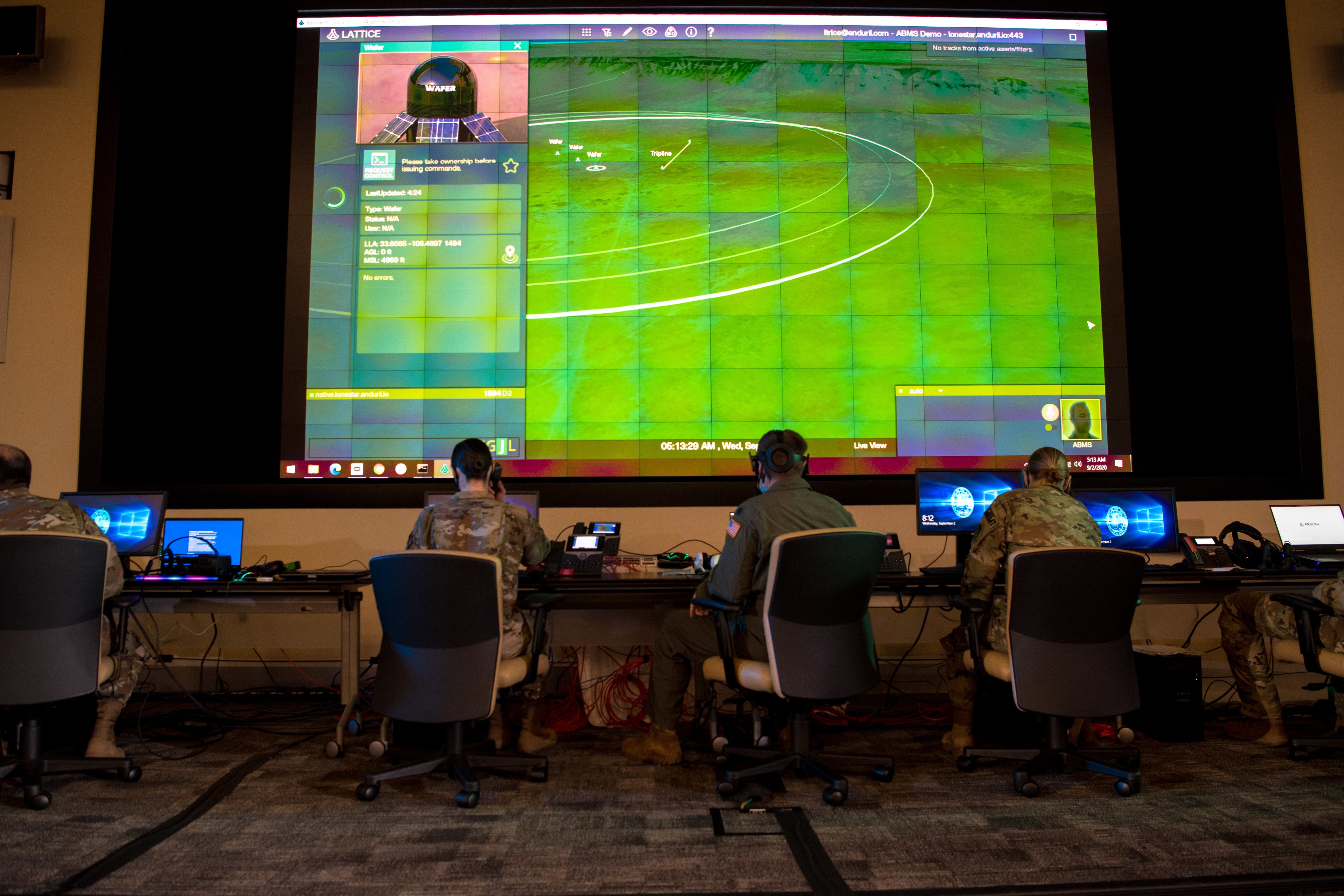JOINT BASE ANDREWS, Md. — It’s Sept. 2, the day before the U.S. Air Force’s second test of its new developmental battle management system. Tomorrow, troops will attempt to defend the American homeland against a simulated cruise missile attack using air- and ground-launched missiles as well as a high-velocity bullet.
But the success of the experiment ultimately rides on a makeshift control center set up at Joint Base Andrews in Maryland, which Defense News and several other media outlets were invited to see on Wednesday. The control center displays a digital picture of the battlefield that seems to give an almost omniscient view of both American and adversarial capabilities.
In the movies, this is how command-and-control systems work: Troops toil on modern computers with stylish-looking graphic interfaces that, with a click of a button, pull up real-time maps of Russian missile sites or live data on the availability of fighter jets at U.S. Air Force bases in Alaska.
In practice, however, the military has been mired in the past, with operators manually watching data feeds, making phone calls to correlate information with other troops watching different data feeds, and producing endless PowerPoint slides to convey information from stovepiped systems to higher ups.
“It takes this huge staff to be able to come up with [a solution]. And if you’ve ever worked in a large organization or huge staff, decisions don’t happen quickly because it takes a long time to get that information together,” a U.S. Northern Command official who helped plan the experiment said on background. NORTHCOM did not authorize the planner to speak on the record.
The whole point of the Air Force’s Advanced Battle Management System is to speed up that cycle, allowing potentially life-saving decisions to be made more quickly.
The service conducted its first ABMS experiment in December, testing a total of 28 different capabilities, including connecting the SpaceX Starlink constellation to an AC-130 gunship, and testing a mechanism that allows F-35 and F-22 fighter jets to stealthily exchange data.
However, the Sept. 3 experiment was engineered to be more ambitious. The scenario begins with an unnamed peer nation taking hostile actions toward the United States, as American forces prepare to deter the adversary from taking further action. Instead, that adversary launches a series of offensive operations — first through a cyberattack, then assaulting U.S. assets in space and finally launching cruise missiles at the United States homeland.
The cruise missile attack was represented by six BQM-167 target drones at White Sands Missile Range in New Mexico, which simulated the flight characteristics of a cruise missile.
If all went well, a collection of networked sensors — some legacy systems that have been in place for years, some developmental and some never before seen — would be able to see the missile coming, and artificial intelligence embedded into the military’s command-and-control system would precisely identify the missile, track it and almost instantaneously present a menu of options to a commander who will chose how to defeat it.
“I think it’s really important on on-ramps that we have a healthy combination of successes and failures, and today really struck a balance,” Air Force acquisition executive Will Roper told reporters Sept. 3.

Roper declined to say whether all cruise missile threats were defeated, but one major success was the first-ever kill of a surrogate cruise missile threat by a high-velocity projectile fired by an Army M109 Paladin, a 155mm howitzer.
“The fact that a very inexpensive, high-density round was able to do that forebodes wonderful things for point defense for the nation’s future base defense and national defense as well,” Roper said.
“But that wasn’t the star of the show. The star of the show was that the data that enabled its kill chain to take effect was enabled by data going into a cloud, being transported over 4G and 5G communications at machine speeds, to culminate in a kill chain that took seconds, not minutes or hours to complete,” he added.
Among the suite of technologies that facilitated the rapid sharing of data were five contenders for what the Air Force calls OmniaONE, which provides a single picture of the battlefield using multiple feeds that are merged through a system called FuseONE. Another technology, SmartONE, is layered over the top of that picture and uses artificial intelligence to cue the user to potentially helpful information, like a major reduction in the number of bombers that can be observed at an adversary’s installation.
But one of the most critical leaps since December was the introduction of CommandONE, developed to send commands over the Link 16 network to tactical users in the field, another of the NORTHCOM planners said on background. NORTHCOM did not authorize this planner to speak on the record either.
Not all systems performed perfectly.
“We did have things go down on the range — different links — as we were connecting all of the different centers that were participating,” Roper said. “There’s a silver lining to that because that forces us to show we can reestablish those points.”
One NORTHCOM planner acknowledged that the system experienced challenges with bandwidth in the days leading up to the exercise.
“What you’re doing is you’re trying to take things that were designed for an unclassified, optimal, cutting-edge technology, and then you’re cutting it in through SIPR [Secret Internet Protocol Router Network] feeds,” he said, using an acronym to describe the military’s network used to send classified information at the secret level.
“SIPR is designed to be optimized for security. Those two things don’t match up very well,” he added. “We were having five minutes of latency in some cases with the feeds that were coming into here.”

Roper also added that the artificial intelligence software, though very promising, needs more work before it is mature enough for fielding. But NORTHCOM head Gen. Glen VanHerck said he is impressed by the AI capability and that it helped provide commanders formulate potential responses to the incoming cruise missile threat.
“With regards to the artificial intelligence and machine-to-machine capabilities, I think it’s important to point out you can be skeptical of those capabilities,” he said. “I’m not a skeptic after watching today.”
“What we saw as it took a look at the threat over and over, it digested more of what that threat capability looked like and gave us a higher percentage of competence,” he added. “And so as a combatant commander, that is very appealing to me to get a system like that — that will learn and provide an additional capability.”
All told, about 1,500 military personnel and 60 industry teams took part in the event, which was led by NORTHCOM and U.S. Space Command. The experiment included platforms from all of the military services — everything from F-16 fighters, MQ-9 Reaper drones, a Navy destroyer and a Coast Guard cutter, as well as experimental technologies like expeditionary 5G towers and robot security dogs made by Ghost Robotics.
Some industry teams embedded software developers with officers operating the control center, and were on call to modify and patch code when users discovered software bugs.
“When we did our dry run, some things weren’t working,” the first NORTHCOM planner said. “They would literally run over, they break open the code. They then repackage it, they push a patch out and then the thing would work. And that would happen over the course of about a minute to be able to do that.”
Anduril Industries offered two technologies used in the experiment. It developed a set of sensor towers used to find and track the cruise missile threats, which will continue to undergo testing by NORTHCOM over the next few months, said Chris Brose, the company’s head of strategy.
Its Lattice software also provided battlefield awareness and AI for the control center. It is one of the technologies that could be a contender for products like OmniaONE, SmartONE and CommandONE.
“You’re taking cognitive burden off of the operator when it comes to understanding the environment, ruling out false positives and finding objects that the user has said that they care about. So in the case of this exercise, it’s cruise missiles,” Brose said of Lattice. “It’s the ability to fuse those [indicators] into objects, classify them as such, and then provide that alert to a human being so that they can make a decision about it.”
“I think, you know, ultimately where we’re going with Lattice is really automating that decision support to the user to say: ‘Considering what’s available, here’s what I would recommend you use, based on an optimal target/weapons pairing.’ And that’s capability that we’re building right now,” he added.
Parsons Corp. also participated in the experiment, said Jay Lennon, its vice president of multidomain solutions, who spoke to Defense News during a Sept. 4 interview. Lennon declined to comment on the exact nature of the technologies offered by Parsons for the event.
The Air Force could be getting close to more broadly fielding some of the capabilities featured in the ABMS experiments, such as the cloud-computing environment — CloudONE — and OmniaONE, Roper said. But it will be up to VanHerck and other combatant commanders to make the call on what is ready and of most use to operators.
“I’m very confident that multiple ... things that we demonstrated today will be transitioned to [combatant commands] in future,” Roper said. “We had five combatant commands sharing the same cloud environments, seeing the same picture, collaborating with the same tools, which is so much better than what we have today.”
Valerie Insinna is Defense News' air warfare reporter. She previously worked the Navy/congressional beats for Defense Daily, which followed almost three years as a staff writer for National Defense Magazine. Prior to that, she worked as an editorial assistant for the Tokyo Shimbun’s Washington bureau.








